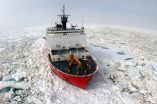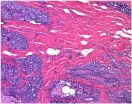New 'electronic skin' for prosthetics, robotics detects pressure from different directions
2014-12-10
(Press-News.org) Touch can be a subtle sense, but it communicates quickly whether something in our hands is slipping, for example, so we can tighten our grip. For the first time, scientists report the development of a stretchable "electronic skin" closely modeled after our own that can detect not just pressure, but also what direction it's coming from. The study on the advance, which could have applications for prosthetics and robotics, appears in the journal ACS Nano.
Hyunhyub Ko and colleagues explain that electronic skins are flexible, film-like devices designed to detect pressure, read brain activity, monitor heart rate or perform other functions. To boost sensitivity to touch, some of them mimic microstructures found in beetles and dragonflies, for example, but none reported so far can sense the direction of stress. This is the kind of information that can tell our bodies a lot about the shape and texture of an object and how to hold it. Ko's team decided to work on an electronic skin based on the structure of our own so it could "feel" in three dimensions.
The researchers designed a wearable artificial skin made out of tiny domes that interlock and deform when poked or even when air is blown across it. It could sense the location, intensity and direction of pokes, air flows and vibrations. The scientists conclude that their advance could potentially be used for prosthetic limbs, robotic skins and rehabilitation devices.
INFORMATION:
The American Chemical Society is a nonprofit organization chartered by the U.S. Congress. With more than 163,000 members, ACS is the world's largest scientific society and a global leader in providing access to chemistry-related research through its multiple databases, peer-reviewed journals and scientific conferences. Its main offices are in Washington, D.C., and Columbus, Ohio.
To automatically receive news releases from the American Chemical Society, contact newsroom@acs.org.
Follow us: Twitter Facebook
ELSE PRESS RELEASES FROM THIS DATE:
2014-12-10
Fatigue and pain, along with other symptoms, prevent many people with multiple sclerosis (MS) from exercising. But a new how-to guide for a home-based exercise program, tested by researchers at Case Western Reserve University's nursing school and the Lerner Research Institute at the Cleveland Clinic, offers a way for people with MS to stay more physically active.
The researchers developed a 24-week exercise program based on a series of pamphlets with varying levels of difficulty. The program helps inactive individuals start at a lower, shorter level of activity and gradually ...
2014-12-10
Windows allow brilliant natural light to stream into homes and buildings. Along with light comes heat that, in warm weather, we often counter with energy-consuming air conditioning. Now scientists are developing a new kind of "smart window" that can block out heat when the outside temperatures rise. The advance, reported in ACS' journal Industrial & Engineering Chemistry Research, could one day help consumers better conserve energy on hot days and reduce electric bills.
Xuhong Guo, Kaimin Chen, Yanfeng Gao and colleagues explain that researchers are pursuing smart windows ...
2014-12-10
HOUSTON - (Dec. 10, 2014) - Like a baseball player sliding into third, a hot monomer skids in a straight line along a cold surface until it's safely among its fellow molecules.
This is not what usually happens when scientists assemble monomers to make thin films for next-generation electronics, but the details remained a puzzle until a team led by Rice University got involved. Monomers are organic molecules that, in this application, form clusters and eventually complete layers.
Researchers at Rice and the University of Maryland led by Rice theoretical physicist ...
2014-12-10
A Danish Research Team identified a molecular mechanism that ensures that when cells divide, the genomic material passes correctly to the resulting daughter cells:
"The process, known as chromosome segregation, is vitally important because incorrect passage of the genomic material makes cells prone to develop into cancer cells," says Jakob Nilsson, associate professor at the Novo Nordisk Foundation Center for Protein Research.
The new discovery depends on a protein called BubR1 which if mutated can cause cancer.
The results have just been published in the scientific ...
2014-12-10
The Ebola virus travels from person to person through direct contact with infected body fluids. But how long can the virus survive on glass surfaces or countertops? How long can it live in wastewater when liquid wastes from a patient end up in the sewage system? In an article published Dec. 9 in the journal Environmental Science & Technology Letters, Kyle Bibby of the University of Pittsburgh reviews the latest research to find answers to these questions.
He and his co-investigators didn't find many answers.
"The World Health Organization has been saying you can put ...
2014-12-10
A team of researchers from the Cockrell School of Engineering at The University of Texas at Austin and environmental testing firm URS reports that a small subset of natural gas wells are responsible for the majority of methane emissions from two major sources -- liquid unloadings and pneumatic controller equipment -- at natural gas production sites.
With natural gas production in the United States expected to continue to increase during the next few decades, there is a need for a better understanding of methane emissions during natural gas production. The study team ...
2014-12-10
A happy worker is a productive worker. That adage may be true, according to a new study from The University of Texas at Dallas.
Two UT Dallas public affairs researchers found that family-friendly policies are beneficial for increasing productivity of employees in public organizations, and the authors said the finding likely lends itself to job satisfaction and commitment.
The study, published in the Public Personnel Management, investigated the effects of family-friendly human resources policies in public organizations. Using the Korea Workplace Panel Survey data from ...
2014-12-10
New school and office workspace designs created by a group of Penn State engineering students are intended to allow users to share space and materials while maintaining their own work areas -- a dual purpose the researchers say has been neglected.
The research began in 2010 as a class project, according to Joseph M. Mahoney, former Penn State graduate student, now assistant professor of mechanical engineering, Penn State, Berks. "There's a lot of interest from an ergonomics perspective and workplace efficiency perspective of designing workstations for single users," Mahoney ...
2014-12-10
In the depths of the Arctic Ocean, buried deep in the sediment, an ancient creature waited for over a million years to be discovered. Paul Valentich-Scott, from the Santa Barbara Museum of Natural History (California), and three scientists from the United States Geological Survey (USGS, Menlo Park, California), Charles L. Powell, Brian D. Edwards, and Thomas D. Lorenson were up to the challenge. Each with different expertise, they were able to collect, analyze, and identify a new genus and new species of bivalve mollusk.
The path to discovery is seldom simple or easy. ...
2014-12-10
Breast cancer is the most common in women. One in nine will suffer breast cancer over their lifetime. Progress in prevention and early detection, and the use of chemotherapy after surgery (adjuvant chemotherapy), have achieved significantly increase survival in this disease in the last ten years, but much remains to be done.
The identification of patients with high-risk breast cancer is key to knowing whether a patient will require only the removal of the tumor by surgery or whether if she will need additional chemotherapy to make sure the removal of breast cancer cells. ...
LAST 30 PRESS RELEASES:
[Press-News.org] New 'electronic skin' for prosthetics, robotics detects pressure from different directions



